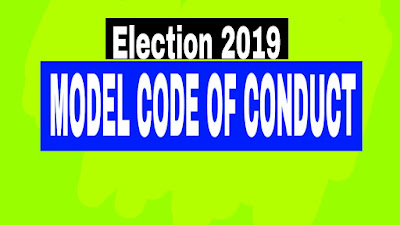Table of Contents
What is Election Code of Conduct? Why and how is the Model Code of Conduct applied?
When the elections are held in India or in any country, some rules are applied during that time. All political parties, candidates and other people present in the country have to do this. By implementing such rules, elections can be done in the right way in the country. Here is the information given about one such rule, whose name is Code of Conduct or Model Code of Conduct. Let’s know what the code of conduct is and when it is done by whom and how it is implemented.
Code of conduct | Achar sanhita
What is ideal ethics? (What is Model Code of Conduct or Meaning?)
Model Code of Conduct is a kind of direction that can be applied during the election, which we can also call rules. These guidelines have to be followed by political parties, candidates and polling agents, that they do not have to do and what to do during the election. Its complete set is prepared. But it has not been made as a law, by presenting it in Parliament. It is a rule made with mutual consent to guide all the parties together with all political parties. It has not been mentioned anywhere in the Constitution of India. Nor has any law passed on this. However, in order to set all things during the elections, it is implemented in our country and it is also done.
Who applies the Model Code of Conduct? (Who applied the Achar Sanhita?)
Model Code of Conduct ie Code of Conduct, as the name suggests, it is related to the election. Therefore, it is the guidelines enforced by the Election Commission of India, which was made by the Election Commission unanimously with the political parties.
When was the Model Code of Conduct presented? (When was introduced Model Code of Conduct?)
It is being implemented by the Election Commission for many years, its debut was made during the assembly elections held in Kerala in 1960 and it was used for the first time in the same election. It was created to give instructions to political parties in connection with election meetings, speeches, slogans etc. Then in the General Elections of Lok Sabha in 1962, the code of conduct was applied to them after seeking feedback from recognized parties and state governments. In the elections of 1962, it was agreed by all parties on a large scale, and then implemented it in every subsequent election. Then in 1979, the Election Commission made some amendments in it, added a section to prevent it from getting an unfair advantage during regularization and election during which they had power in it. In the Supreme Court in 2013, the Election Commission directed the Election Commission to incorporate guidelines regarding the election manifesto, which was told to include them in the Code of Conduct for the 2014 general elections.
What is the main provision of Model Code of Conduct? (What is the key provisions of the Model Code of Conduct?)
In the Code of Conduct, 8 major provisions have been displayed along with general conduct, meetings, procession, voting day, polling booth, observer, party in power and election manifesto etc. Election Code of Conduct applies only on the basis of all these. The information about this is as follows:
Use caste and communal feelings for safe votes,
Criticizing candidates based on unverified reports
Bribery or scare voters,
Conducting demonstration or demonstration outside a person’s homes
Procession: – If two or more candidates plan to take a procession from the same route, then the organizers have to establish a connection to ensure that they do not clash the procession. At the same time, it has not been allowed to carry and burn the statues representing the members of political parties.
Polling station: – Only voters and people of the Election Commission will be allowed to enter the polling booths. Apart from this, no voting can enter the center.
Inspector: – An inspector is also appointed by the Election Commission; any candidate from them can report any kind of problem in relation to the conduct of elections.
Party in power: – In the year 1979, the Model Code of Conduct imposed the following restrictions to regulate party’s conduct in power: Ministers should not combine official trips with election functions or use official machinery for this.To improve the chances of victory in the elections

